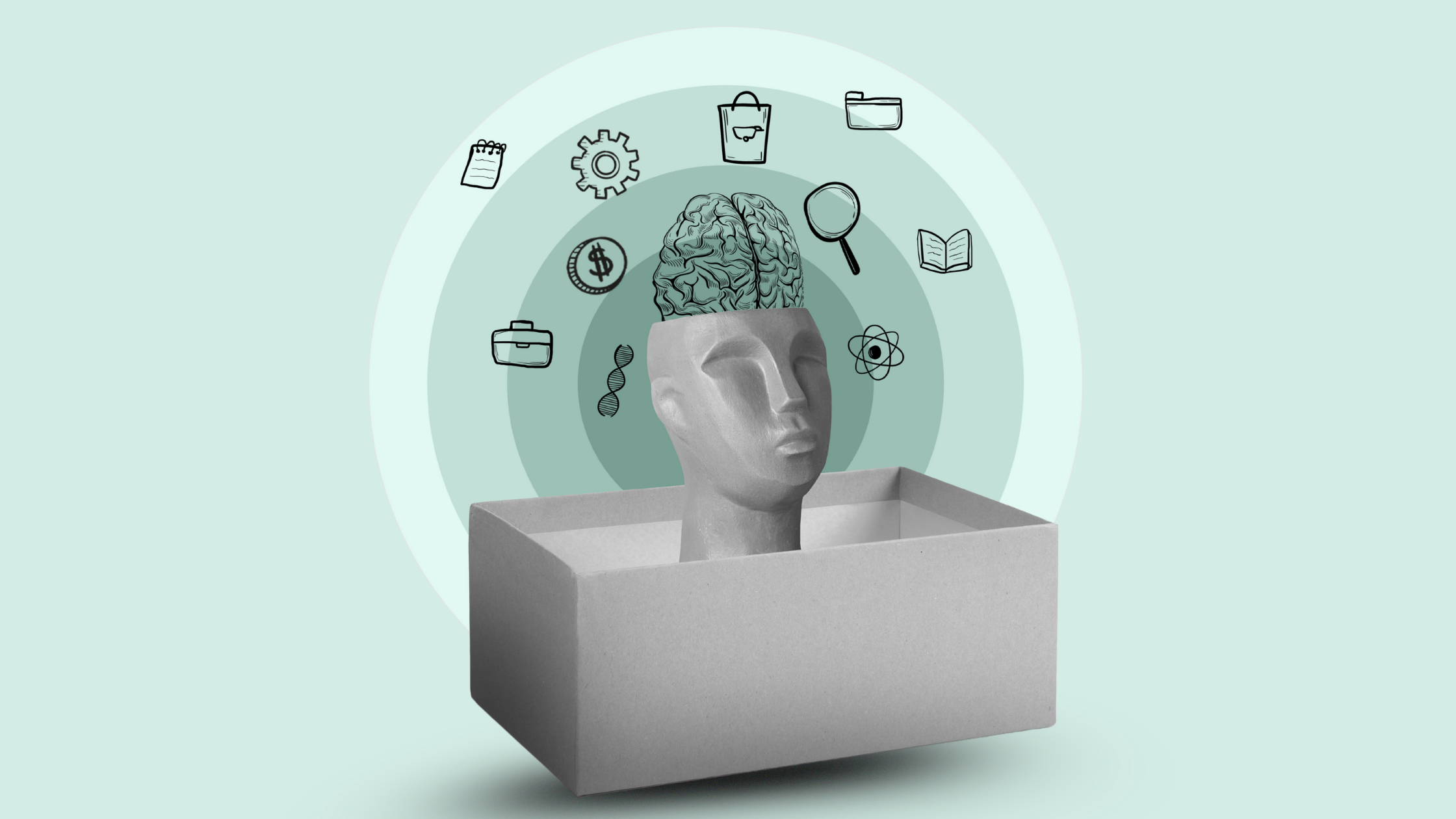The Psychology of Marketing
Have you ever made an impulse purchase just cause your gut feeling said? Well, you are not alone haha. You compare prices, check customer review, go back and forth through different brands and honestly said normal but isn’t that mentally draining? Because of all these situations and circumstances, it becomes important to understand the consumer psychology.
Also, it is true that our purchasing decisions are not always based on rational thinking or logical reasoning. Emotions is the main factor on how we look at the product which eventually drives us to buy. We got to understand what is consumer psychology and how emotions shape in market analysis.
“Businesses can more effectively customize their marketing techniques to persuade consumers to choose their products over those of competitors by knowing how emotions influence purchasing decisions.”
What is Marketing Psychology?
The study of how marketing strategies affect our feelings, ideas, and actions is known as marketing psychology. You can better understand the behaviour of your clients by incorporating popular psychological concepts into your tactics. This knowledge enables you to persuade clients to buy products or do particular things.
The brain has its own ways of working, and it makes shortcuts to help with decision-making. You may enhance your marketing initiatives and expand your audience by using these mental shortcuts. To put it briefly, knowing the how and why of people’s attitudes and behaviours improves marketing campaigns and helps in creating a more distinctive brand identity.
Keep in mind that understanding how, what, and why people think and behave the way they do will influence all of your marketing efforts.
1. Change is a natural force:
Accepting change is the most important psychological aspect. We cannot ignore change while discussing the significance of psychology in marketing. News reveals the obvious just when you believe that this is the highest temperature that a human being can withstand. In the same way, Google introduces fresh algorithm upgrades immediately after you have mastered SEO tactics.
It’s the same with marketing. You can’t run all of your campaigns using the same strategy. Furthermore, you can’t always use the same tactic. Change is necessary, and understanding your audience is the first step toward achieving this.
Psychology is a key component when discussing audience comprehension. The psychological characteristics help marketers in understanding consumer behaviour and developing methods that appeal to end users.
2. Another sign of procrastination is fear:
Many people can be surprised by this because they think that procrastination just serves to postpone tasks.
However, it also involves questioning our own efforts. Is the new application going to function? Will the new e-commerce structure offer a return on investment? What happens if the business market doesn’t do what was anticipated?
We begin with second-guessing rather than self-analysis, and the majority of us are unaware of this. However, cross-analysis is a natural human behaviour. Furthermore, we oppose change when we have been accustomed to a scenario for a long time, which breeds anxiety of things going wrong and underperforming products.
As a result, it causes procrastination, when we try to put off chores as long as possible to slow down our racing heart. Since unconventional organizations have experienced this, they have a better understanding of these trends. Since they recognized the value of psychology in marketing, they now take advantage of these psychological issues to develop skilful and successful marketing plans.
3. Solving problems is a secret key:
Not only do businesses struggle with the dread of procrastination, but so do your clients and customers. When it comes to business-to-consumer businesses, end customers are hesitant to buy a certain product. If a person is searching for a certain product that fits their unique demands, they will come to your website.
Therefore, as a company, you must become their issue solver by concentrating on developing and promoting items that meet the needs of people. When marketing and psychology are combined, brands can achieve extraordinary success. As a result, businesses can boost their ROI and make money if they begin to concentrate more on solving problems.
4. Know what your customers are buying:
Most marketers ignore the fact that customers talk in a variety of ways, which results in low conversion rates and fewer sales. In what specific areas do marketers fail? Well, it doesn’t attract any business when the unique personal traits of current and new clients are either ignored or not taken into account in their particular and different marketing strategies.
A strategic streak is marketing. An excellent marketer is always able to incorporate the appropriate goals into their plans. For this reason, whenever they develop a strategy, publish content, run a social media ad, or send out a newsletter, they keep their clients in mind.
Well, it doesn’t attract any business when the unique personal characteristics of current and new clients are either ignored or not taken into account in their particular and different marketing strategies.
A strategic streak is marketing. An excellent marketer is always able to incorporate the appropriate goals into their plans. For this reason, whenever they develop a strategy, publish content, run a social media ad, or send out a newsletter, they keep their clients in mind.
Pay more attention to how psychological marketing can benefit your company than to what psychological marketing is. You can start creating techniques that get people to click once you know what kind of ad campaign content will appeal to those who are interested.
5. Pay attention to the customer’s journey:
One strategy you may have heard about a lot is the customer journey. This is due to the fact that knowing what your customers do from browsing your website to making a purchase is essential to comprehending their behaviour.
You must educate your customers about your brand in order to improve their experience. Anywhere—through Instagram advertisements, newsletters, or even their friends your potential buyers can learn about your business or product.
You can definitely develop tactics once you can comprehend your customers’ behaviour and combine psychology and marketing. Don’t forget to concentrate on developing potential marketing tractions that will bring in clients. Additionally, you must know what kind of marketing efforts to create in order to get people to buy.
6. It’s Better to Have Less:
Everywhere we look, we see that a brand is making an excessive effort to use marketing or advertising to grab the attention of consumers. However, there are situations when doing more and more may just annoy your clients and cause them to never return. For instance, sending too many emails or sending pointless notifications are useless and ineffective in any situation.
Additionally, the internet gives us a variety of options to quickly reach an audience and leave a lasting impression. A spectator can now effortlessly click on a staggering number of posts on the internet, including webpages, YouTube videos, Instagram reels, and other social media posts. The most effective marketing strategy is shown in the first few seconds.
Forward-thinking brands, on the other hand, are becoming skilled at locating target populations online. Additionally, they have been emphasizing on “less is more” and employing psychological marketing techniques. Because different brands offer the same product with lengthy communications, customers quickly grow disinterested. Therefore, you need to be a little more relaxed in what you put into your marketing efforts rather than in your tactics if you want to maximize their effectiveness.
7. The Advantages of Video Marketing:
Overall, the use of video opens up a number of marketing channels. Its conversational language will help consumers comprehend a brand, and its motion graphics are aimed for keeping viewers interested. But longevity is something that most marketers overlook. You might feel compelled to tell your customer everything you know about your product, but do they have the time to listen?
According to psychology, people are more likely to become side-tracked. As a result, if your video is very long, you are actually pitching the opposite of conversion. Videos can increase conversion rates, but only if they are concise and direct. Webinars are used for lengthy videos. Therefore, keep in mind what you are pitching for when you are developing a video marketing campaign.
The video should be brief and focus on problem-solving strategies to draw in customers if your sole goal is to get them to purchase a product. However, if you want to give them additional information about a service you are providing, you can make a webinar that is brief and to the point while revealing the greatest number of advantages.
The Power of Emotions in Marketing
Marketing is about feelings, not just statistics, demographics, and tactics. Whether we are aware of it or not, our feelings at the time have a big impact on the decisions we make. Research indicates that when it comes to conversions and brand memory, emotional content performs 31% better than logical message.
Customers purchase more than just goods; they also purchase emotions, experiences, and fixes for their issues. A psychological bond created by emotions promotes engagement and loyalty. A Nielsen study found that advertisements with emotional content outperform those with only informative content by a factor of two. Customer retention, word-of-mouth referrals, and brand trust are all enhanced by emotional marketing.
Understanding Marketing Analysis
Examining and assessing the different elements that affect a market’s behaviour is known as market analysis. It involves obtaining and examining information on customers, rivals, and market trends. Businesses can make well-informed decisions regarding their pricing, marketing tactics, and product offerings by comprehending market analysis. Businesses can keep ahead of the competition in a cutthroat market by using it to help discover opportunities and possible risks. Businesses can, for example, customize their products to satisfy certain needs by examining consumer preferences and purchase trends.
The Importance of Market Analysis in Decision Making
Decision-making is greatly facilitated by market analysis, which offers insightful information about consumer preferences, industry trends, and competitors’ strategies. It guides companies’ strategic decisions by helping them in identifying both possible risks and profitable possibilities. Analysing market data, for example, can show how consumer behaviour is changing, which enables businesses to change their product offerings.
Additionally, market analysis helps organizations stay competitive by discovering unexplored market areas or building trends. Businesses may ensure their success in dynamic and competitive markets by making well-informed decisions regarding pricing, product positioning, and marketing tactics based on an awareness of the current market situation.
How consumer behaviour is influenced by emotions
Knowing how emotions affect consumer behaviour can help you as a business owner make better decisions because you will be more successful if you design your marketing plan with the requirements and desires of your customers as well as their emotions in mind. Our emotions have been programmed into the human brain, which is a powerful organ. In fact, emotions have a significant role in how we connect with one another and the environment. Since emotions are a major part of what makes us human, it’s critical that we comprehend the various ways in which they influence our behaviour.
Which emotions influence the behaviour of consumers?
Undoubtedly, emotions play a significant role in shaping consumer behaviour when it comes to figuring out why people make the purchases they do. Our emotions affect what we buy and how much we’re prepared to pay for it, whether it’s the excitement of finding a good deal, the fulfilment of purchasing something we need, or even the fear of losing out. However, what particular emotional cues motivate us to buy things?
Pleasure, fear, and guilt are the three primary feelings that people typically consider when making judgments about what to buy, according to research. We all like to obtain a good deal or locate the ideal item for our home or as a gift for someone, thus pleasure is frequently the main emotion connected to purchasing something. When we believe we might be losing out on a chance or offer, fear can sometimes take over. Another feeling that might influence purchasing decisions is guilt, particularly when it comes to impulsive purchases or going over budget.
Other psychological factors influence consumer behaviour in addition to these three main emotions. For example, advertising and social media frequently appeal to people’s need for community, approval, and status. Businesses use these strategies to create a feeling of exclusivity, urgency, and jealousy.
Although, it’s critical to remember that our own cultural customs and values can also have an impact on the purchases we make. Individuals in various nations or areas may base their purchasing decisions on a range of criteria, such as social standing, religious convictions, familial loyalty, or even regional superstitions. Success in international markets can depend on your ability to comprehend these cultural quirks.
“Targeted, emotional advertising is one method of using emotions to sway consumer decisions. This includes making advertisements that arouse particular feelings in viewers, like comfort or safety.”
Customers can develop a bond with your brand if you carefully choose the appropriate emotion and make sure it aligns with the good or service being advertised.
“Storytelling is another technique to use feelings to sway consumer choices. Customers are more likely to connect with your brand and choose your product or service over competitors if you tell them stories that arouse particular feelings in them.”
You can develop a more successful marketing plan that speaks directly to clients’ emotions by learning about their feelings and how they relate to products.
Now comes, Neuromarketing!
The application of neuroscience to comprehend consumer behaviour is known as neuromarketing. In order to comprehend why people, make decisions, this intriguing topic integrates the scientific disciplines of psychology, neurology, and marketing.
“The foundation of neuromarketing is the idea that people make decisions unconsciously and are motivated by emotion. Neuromarketers can identify the ideal approach to position a product or service to appeal to the emotions of its target demographics by knowing how the brain functions.”
Although neuromarketing is still in its early stages, it has huge potential to influence customer behaviour. Building effective campaigns in the future will depend heavily on neuroscience-based marketing techniques, which will produce hyper-targeted message that reaches the appropriate audience at the right moment.
Implementing Neuromarketing Strategies
By fusing neuroscience with marketing, neuromarketing allows marketers to track consumer emotions in real time and determine what drives people to act on their decisions. It examines how individuals react to a range of stimuli, such as words, noises, colours, and visual clues.
Marketers can make more informed decisions and develop campaigns that are genuinely successful by using neuromarketing techniques to gain a deeper understanding of the behaviour and preferences of their target audience.
By offering options that customers are more likely to purchase, neuromarketing can also help design better customer experiences by offering insightful information about how consumers make decisions. This makes it easier to design a customized client experience that meets their wants rather than merely urging them to buy a certain good or service. Furthermore, neuromarketing strategies can provide priceless information about the best approaches to connect with clients and boost conversions.
Wrapping It Up:
Whether we like it or not, emotions play a significant role in our purchasing decisions. Businesses can use neuromarketing to better understand how emotions impact consumer behaviour and create more successful campaigns by understanding the psychology of consumer behaviour. Marketers may develop more persuasive messaging that will appeal to their target audience, increase their chances of success, and propel brand expansion by comprehending how emotions play a part in purchasing decisions.
Thankfully, human minds function similarly, and this is ideal for digital marketers. Although it is unlikely that two people will have comparable hobbies and routines, the vast majority will give rise to the influence of basic psychological tricks and strategies. Marketers will see better results if they recognize this and include psychology into their strategy.





